CANCER PREVENTION SETS SAIL WITH THE AMERIGO VESPUCCI SHIP

To raise public awareness, cancer prevention is “sailing” with the “Vespucci Mediterranean Tour.” AIOM (Italian Association of Medical Oncology), AIRC, AIOM Foundation, and SIRM (Italian Society of Medical and Interventional Radiology) are the four scientific partners of the “Vespucci Mediterranean Tour.” In 2024, an estimated 390,100 new cancer diagnoses were made in Italy. Cancer should no longer be considered an “incurable disease”: half of those diagnosed today are likely to recover, with a life expectancy equal to those who have never developed cancer. Prevention is crucial. 40% of cancer cases can be avoided through the adoption of healthy lifestyles (primary prevention), along with participation in screening programs for early detection (secondary prevention). At the various stops of the “Vespucci Mediterranean Tour,” oncologists offer advice to citizens and volunteers distribute educational materials related to prevention.
KEY RULES FOR PRIMARY PREVENTION
DO NOT SMOKE:
A cigarette contains not just tobacco, but also a vast number of harmful substances. With every puff, more than 4,000 chemicals are released during combustion. Among the most dangerous is tar, which contains carcinogens that deposit in the lungs and airways. Nine out of ten lung cancer diagnoses are caused by cigarette smoking, which is also strongly linked to other cancers as well as cardiovascular and respiratory diseases. Each week of smoking shortens life by one day. Not smoking is the best way to reduce the risk of developing many types of cancer.
HEALTHY DIET:
Three out of ten cancers in Italy are linked to unhealthy diets. Obesity, in particular, is a risk factor for 12 different types of cancer. Many of these cancers could be prevented by following the Mediterranean diet, which has been shown to reduce cancer mortality by 10%. The Mediterranean diet is inspired by the eating habits of countries along the Mediterranean Sea and is based on fruits, vegetables, legumes, grains, extra virgin olive oil, and fish, while still allowing moderate consumption of dairy, meat, and eggs. No foods are banned—just balanced in terms of quantity and frequency.
AVOID ALCOHOL:
4% of cancer cases are attributable to alcohol consumption. There is no “safe” amount for the body. Alcohol increases the risk of developing at least seven types of cancer. The IARC (International Agency for Research on Cancer) classifies alcohol as a Group 1 carcinogen—“definitely carcinogenic to humans.”
REGULAR PHYSICAL ACTIVITY:
Sedentary behavior is a risk factor for being overweight and obese, which in turn increases cancer risk. Physical activity has both preventive and therapeutic effects and can be compared to a medication that, if properly “administered,” helps prevent and inhibit the development of serious diseases like cancer. The World Health Organization (WHO) recommends that adults aged 18 to 64 engage in 150–300 minutes of moderate-intensity or 75–150 minutes of vigorous-intensity aerobic activity per week. A study conducted by researchers at the U.S. National Institutes of Health (NIH) and the University of Oxford, published in the British Journal of Sports Medicine, demonstrated that even light physical activity has anti-cancer benefits.
VACCINATIONS:
HPV (Human Papillomavirus) is a widespread infectious virus with over 120 known types. While usually benign, in some cases it can cause cellular changes that progress into cancer. Two strains (HPV 16 and 18) are responsible for about 70% of cervical cancer cases. HPV also causes other types of cancer (e.g., anal, vaginal, vulvar, penile, and head and neck cancers) and accounts for 5% of all cancers worldwide. HPV vaccination has been recommended and offered free of charge by the Italian National Health Service since 2008 to girls and boys starting from age 11.
HEREDITARY AND FAMILIAL CANCERS:
Some individuals are born with specific genetic mutations (called “constitutional” or “germline” mutations) that increase their cancer risk. These mutations do not mean a person will definitely develop cancer—they inherit the risk, not the disease itself. Approximately 8% of cancer patients carry a pathogenic variant. Often, these patients and their close relatives are unaware of the condition. These men and women should be considered “under special surveillance,” especially since genetic tests for hereditary cancers are now available. These are crucial tests that allow for the development of highly effective primary prevention plans. If someone has a family history of certain cancers (e.g., breast, ovarian, pancreatic, or prostate), it’s important to consult a doctor who can recommend genetic counseling.
SECONDARY PREVENTION
SCREENING PROGRAMS:
Secondary prevention aims to detect cancer at an early stage, so it can be treated effectively and increase the chances of recovery. In the early stages, cancer is usually localized in a small area of the body and often presents no symptoms. Participating in screening programs helps reduce cancer mortality and increases the likelihood of successful treatment. In Italy, according to the Ministry of Health, the National Health Service offers three free cancer screening programs: – Breast cancer: Mammogram every two years between ages 50 and 69 (in some regions, screening is offered from 45 to 74) – Cervical cancer: Pap test every 3 years or HPV test every 5 years (varies by region) – Colorectal cancer: Fecal occult blood test every two years for men and women between ages 50 and 69
UROLOGICAL CHECKUPS:
Prostate cancer is the most common cancer among men in Italy. Modifiable risk factors at onset include diets rich in saturated fats, overweight and obesity, smoking, alcohol consumption, and physical inactivity. Genetics also plays a key role: men with a first-degree relative affected by prostate cancer have double the risk of developing the disease. Age is another factor. This cancer accounts for about 20% of all cancers diagnosed in men over 50. In its early stages, prostate cancer is asymptomatic. Therefore, regular checkups with a urologist are essential for men over 50.
With the unrestricted contribution of:


With the unrestricted contribution of

